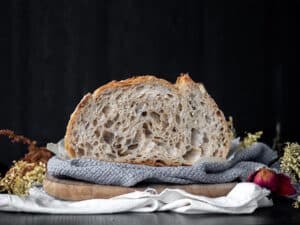Bread is a food product based on both tradition and pleasure. Bakers therefore seek to stand out in terms of presentation, shape and taste. But how do we quantify these notions that call upon the five human senses?
What exactly is sensory analysis?
Sensory analysis is a living, evolving science based on the use of the human senses (sight, hearing, smell, taste, touch). The term first appeared in the 1960s to refer to the examination of a product’s organoleptic properties by means of the sense organs (Sauvageot et al., 2013).
It therefore relies on the senses of men and women, tasters referred to as panellists, whether or not they are trained in the art of tasting. Said panellists can have differing levels of expertise or qualifications, ranging from simple consumers to trained, qualified or expert individuals, depending on their degree of knowledge of the product universe and their level of training. Descriptors are used to translate their sensory perceptions into objective terms.
How to quantify sensory analysis?
Sensory analysis comes up against various problems relating not only to the complexities inherent in foodstuffs, especially bread, but also to the choice of which sensory analysis method should be used depending on the type of response anticipated.
In practice, two approaches are evident when developing a product, each implementable using various methods: a hedonic approach, measuring the consumer’s appreciation, and an expert approach, enabling a more in-depth assessment of the product’s sensory profile. Cross-referencing between these two approaches helps build a preference map and identify the most consensually agreed upon product.
Is it possible to rely on sensory analysis alone in breadmaking?
No single sensory analysis method alone can resolve a problem of market positioning. It is the expertise involved in the sensory analysis, which, by selecting the most appropriate tests for a given problem, and by combining the results of several methods, will cater to the needs of every situation.
Sensory analysis is often used to supplement instrumental measurement methods (chromatography, texturometer, pH, image analysis, etc), in order to ensure objective results wherever possible. Sensory methods generate either subjective data (consumer preference, appreciation) or objective/descriptive data (profile, product “data sheet”). In Europe, these methods are governed by the regulatory framework standard ISO 13299.




